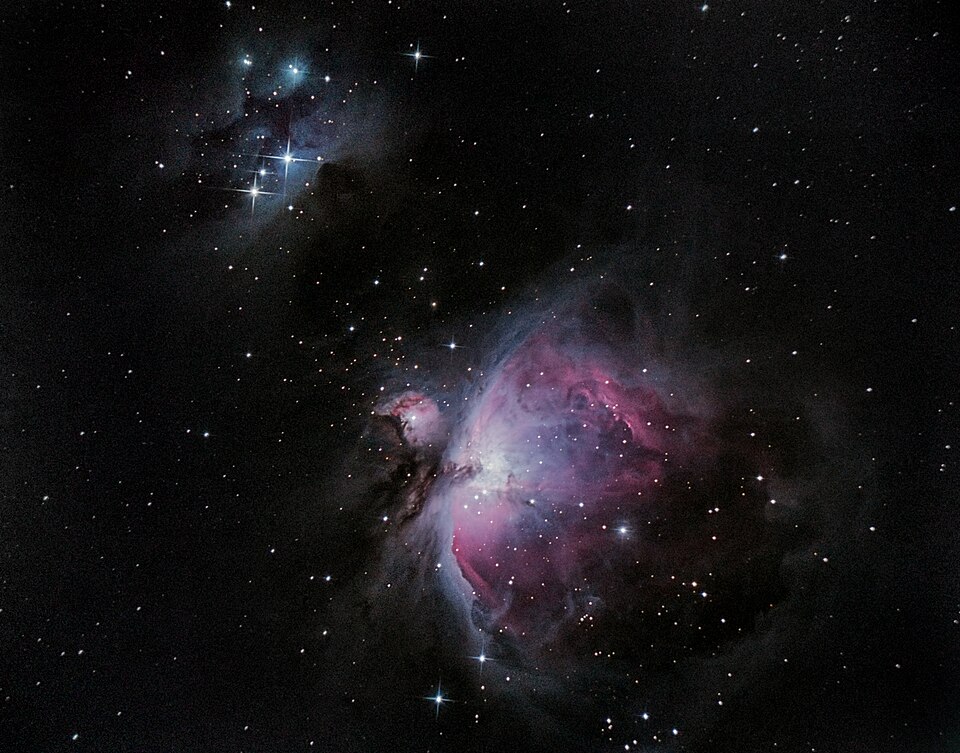Orion, Pleiades, and Hyades: Unveiling an 800 Million-Year Stellar Evolution

Recent astrophysical research has revealed that the Orion Nebula, Pleiades, and Hyades star clusters are intricately linked, representing varying stages of development from the same cosmic progenitor over the span of 800 million years. This groundbreaking study, led by Dr. Ghasem Safaei and Professor Hosein Haghi from the Institute for Advanced Studies in Basic Sciences in Zanjan, Iran, alongside collaborators at the University of Bonn, provides a comprehensive model of stellar evolution published in the Monthly Notices of the Royal Astronomical Society.
The Orion Nebula Cluster, located approximately 1,350 light-years from Earth, is a vibrant region with about 4,000 stars still encased in gas. At merely 2.5 million years old, it exemplifies the early phase of star formation. In contrast, the Pleiades cluster, at around 100 million years old, retains a more dispersed structure after losing approximately 53% of its initial stellar mass. The Hyades, which is about 700 million years old, serves as a representation of an older cluster with only 9% of its original stars remaining, illustrating the effects of stellar evolution and the dispersal process that occurs over millions of years.
Dr. Pavel Kroupa, an astrophysicist at the University of Bonn, likened these clusters to snapshots of the same individual at different life stages, stating, "The Orion Nebula, Pleiades, and Hyades are like three different photos of the same person — as a baby, adolescent, and elderly." This analogy underscores the significance of these clusters in understanding stellar evolution.
In their simulations, the researchers utilized the advanced nbody6 code to accurately model the dynamics of star clusters under the influence of various internal and external forces. The study confirmed long-held theories regarding star formation, particularly the monolithic collapse model, which posits that clusters form rapidly from dense regions within molecular clouds, as opposed to the hierarchical assembly model, which has proven inadequate for these types of clusters.
The findings bring to light the mechanisms behind star cluster formation and dispersal. As stars form within dense gas clouds, they create substantial energy that drives the expulsion of gas, initiating a process that leads to the clusters’ expansion and eventual dissipation. This evolutionary path suggests that star clusters do not form randomly; rather, they follow a predictable pattern shaped by their initial conditions.
The research team also explored the concept of mass segregation, where more massive stars tend to migrate towards the cluster's center, influencing the overall dynamics and longevity of the cluster. Their simulations demonstrated that clusters with initial half-mass radii of 0.2–0.3 parsecs and masses between 1200–2000 solar masses closely align with real-world observations of these star systems.
The implications of this study extend beyond understanding these three star clusters. The insights gained may refine existing models of stellar and galactic evolution, contributing to a broader understanding of how star groups across the universe develop and interact over time. As Prof. Akram Hasani Zonoozi, another co-author of the study, remarked, "This research gives us a deeper understanding of how star clusters form and develop and illustrates the delicate balance between internal dynamics and external forces such as the gravitational pull of the Milky Way."
In summary, the Orion Nebula, Pleiades, and Hyades star clusters serve as vital components of a cosmic narrative that spans hundreds of millions of years, elucidating the lifecycle of stars and the intricate processes that govern their evolution within the Milky Way galaxy and beyond.
Advertisement
Tags
Advertisement





